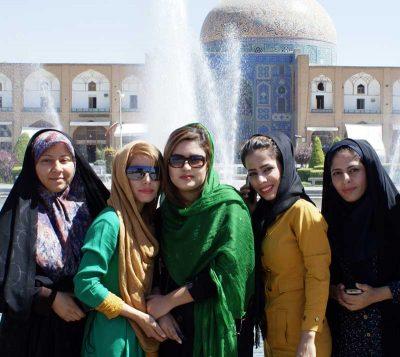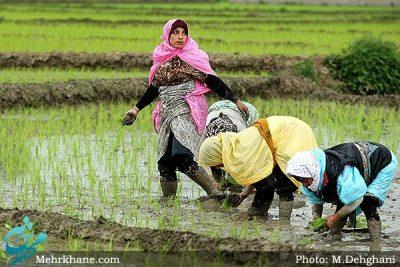The word hijab is often used, in the West, for the headscarf – but in Iran women over the age of 9 also need to cover their bum.
The most common ways of doing this are with a manto or a chador.
Manto are short or long coats:
- Many female Government employees wear long, loose dark manto, with their hair carefully covered, perhaps using a bonnet or cap under their headscarf, and minimal or no make-up.
- Many young women in North Tehran wear short, perhaps tight mantos – and many of them have much more hair showing with nothing under their headscarf (except maybe hairspray to help the tiny scarf stick on the ‘big hair’!) and very heavy make-up.

Hijab is definitely what you make of it!
Chadors look like cloaks – the same word is used for ‘tent’. But chador are nothing like a standard cloak or tent – and very definitely nothing like a draped sheet! They are specially made to drape gracefully over your forehead, fall to the ground, and be held closed from inside – ideally, hands shouldn’t be visible:
- Underneath a chador, women will usually wear (sometimes multiple layers of) long clothes to around ankle-length. They will often have a cap to ensure all their hair is covered, and a headscarf or something like a maghna-eh in case the chador slips.
- I’ve seen lots of women wearing chador they’ve constructed to smoothly fit over a shoulder bag.
- Many pious women choose to wear chador all the time. Students officially have to wear chadors.
- Chadors are obligatory at some shrines – if so, you will be able to borrow one.
 Rural women often wear chador tied around their middles, so they’re not stopped from working and getting on with daily life – you cant hold your chador closed from inside, when you’re doing agricultural work!
Rural women often wear chador tied around their middles, so they’re not stopped from working and getting on with daily life – you cant hold your chador closed from inside, when you’re doing agricultural work!- The western TV news stereotype has women in black chadors chanting ‘Death to America’ and I have been in a crowd of demonstrators doing just that – at the same time as welcoming me to Iran!
- Not all chador are plain black – most rural women usually wear blue and white patterned chador, and many pious urban women who wear black chador in the street also have patterned (often blue and white) chador to wear at home.
- Only once have I seen a high fashion chador – made from very gorgeous semi-transparent patterned material, worn over tight legged trousers you could just see a glimpse of. The woman wearing this was walking fast, holding the chador material over her mouth, and making sure she didn’t look at men, and that they couldn’t look at her for long (the ‘hijab of the eyes’). No wonder, I thought when I caught sight of her, that there is so much Persian poetry!
You only have to cover your hair and your bum – not your hands or toes.
Gloves aren’t necessary. Though:
- Some very pious women wear black gloves
- I wear white gloves when I go for a long walk – to keep the baking Iranian sun off my hands
You can wear open-toe sandals in most places.
If your hijab is sloppy, it may be called ‘bad-hijab’, especially by those — many — women and men who actively like hijab. Please be respectful of these people. They are then much more likely to be respectful of you!